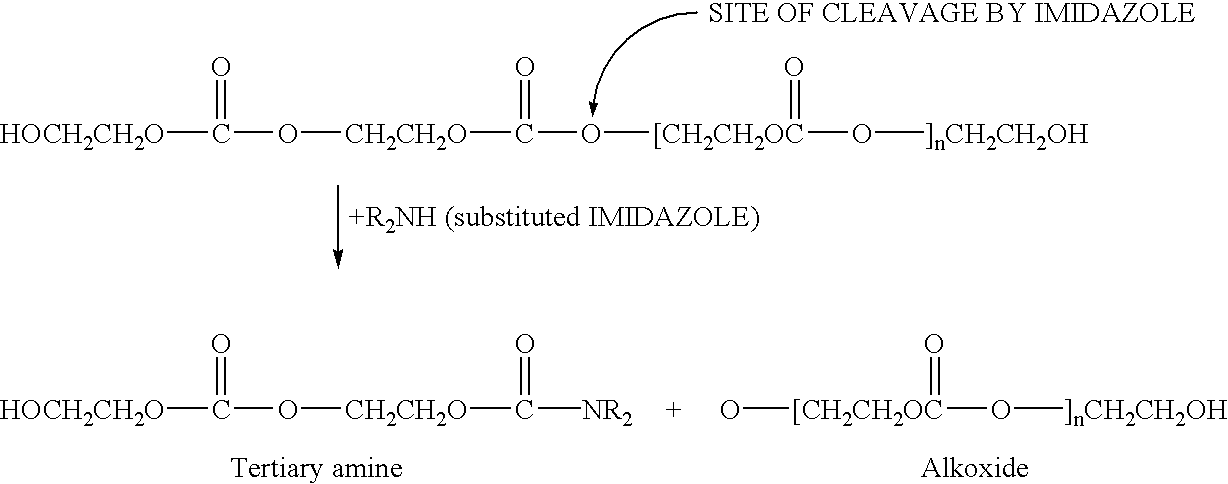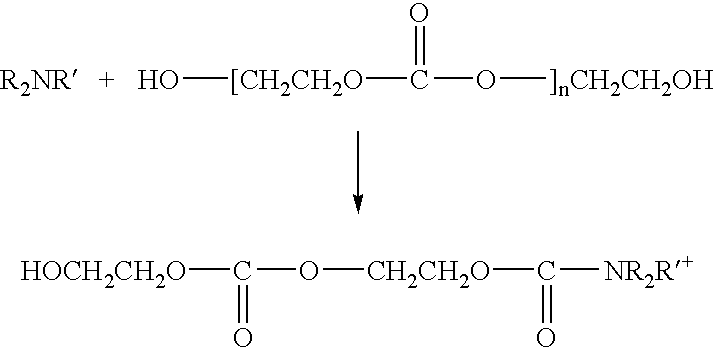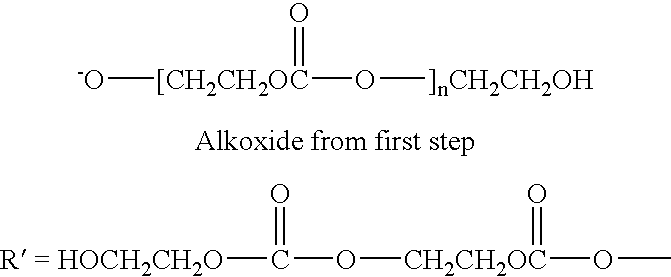Stabilizing polyalkylene carbonate resins
a technology of polyalkylene carbonate and stabilizer, which is applied in the field of stabilizing polyalkylene carbonate resins, can solve the problems of adversely affecting the performance, adversely affecting the stability of these polymers, and water (moisture) having a detrimental effect, so as to achieve stability, improve the adhesion of polyalkylene carbonates to various substrates, and simple chemical system
- Summary
- Abstract
- Description
- Claims
- Application Information
AI Technical Summary
Benefits of technology
Problems solved by technology
Method used
Image
Examples
specific embodiments
[0030] The following examples are included for illustrative purposes only, and do not limit the scope of the invention or the claims. Unless otherwise stated, all parts and percentages are by weight.
example i
[0031] A sprayable formulation for aluminum sheet for the aluminum brazing industry based on this technology is as follows:
1 Ingredient % Polypropylene carbonate 5.72 Propylene glycol methyl ether acetate 34.59 Methyl Ethyl Ketone 49.00 2-ethyl 4-methylimidazole* 0.69 KAl F.sub.4 10.00 *This is one of a series of substituted imidazoles commercially available from Air Products, Allentown, PA. under the "Curezol" and "Incure" Tradenames.
[0032] The first four ingredients are stirred at ambient temperature until totally dissolved and then the flux (KalF.sub.4) is dispersed in this mixture. The mixture is sprayed onto an aluminum substrate and the solvents removed by air drying and / or heating. The coating then is quick cured e.g. 2'@70.degree. C. The coating is now tough and stable with good adhesion to the base metal. It can now be stacked, formed into a coil or otherwise packaged and transported without any possibility of flaking or dusting. It delivers the proper amount of flux for br...
example ii
[0033] A dipping formulation for aluminum rings using cesium aluminum fluoride as the flux and imidazole as the cross linking agent is as follows:
2 Ingredient % Polypropylene Carbonate 15.0 Imidazole 2.5 Propylene glycol methyl ether acetate 20.0 Methyl Ethyl Ketone 30.0 Cesium Aluminum Fluoride 32.5 100.0
[0034] The first four ingredients are stirred at ambient temperature until totally dissolved and then the powered flux (cesium aluminum fluoride) is dispersed in the mixture. The rings are dipped into the mix, air dried and then cured 2'@70.degree. C. The rings now have a tough flux coating that can take rough handling.
PUM
| Property | Measurement | Unit |
|---|---|---|
| temperature | aaaaa | aaaaa |
| weight percent | aaaaa | aaaaa |
| pressure | aaaaa | aaaaa |
Abstract
Description
Claims
Application Information
 Login to View More
Login to View More - R&D
- Intellectual Property
- Life Sciences
- Materials
- Tech Scout
- Unparalleled Data Quality
- Higher Quality Content
- 60% Fewer Hallucinations
Browse by: Latest US Patents, China's latest patents, Technical Efficacy Thesaurus, Application Domain, Technology Topic, Popular Technical Reports.
© 2025 PatSnap. All rights reserved.Legal|Privacy policy|Modern Slavery Act Transparency Statement|Sitemap|About US| Contact US: help@patsnap.com



